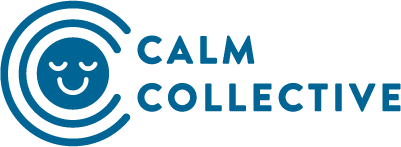#Relatable: Glamourising and Over-simplifying Mental Illnesses Online
If you, like me, were “chronically online” in the early 2010s, then you might remember how depression and eating disorders were often glamourised online. The “sad teen” aesthetic was characterised by black-and-white imagery overlaid with quotes about sadness, self-harm, and suicide, coupled with moody indie rock music.
Today, mental health content proliferates social media platforms. The hashtag #mentalhealth has more than 48.5 billion views on TikTok and 42.1 million posts on Instagram. People suffering from mental health disorders may feel incredibly lonely, so connecting with strangers online reminds them that they’re not alone in their struggles. As such, on Reddit, people forge communities bonded by shared mental health disorders and experiences.
This may seem innocuous, and while I am reluctant to separating content about mental health into the categories “good” and “bad” as it’s so nuanced, there is definitely content that, like the Tumblr-era posts, can do more harm than good.
For starters, searching “ADHD” on TikTok directs me to a video with nearly 1 million likes that outlines some symptoms of the disorder. According to this post, ADHD can look like constantly shaking your leg, being easily distracted, listening to the same song over and over, and excessive talking. “Now I’m scared I might have ADHD,” writes one commenter. “So not everyone has this?” asks another. While it may be true that these are signs of ADHD, they can also be signs of other mental health disorders: for instance, the bouncing of one’s leg can be a sign of anxiety, and excessive talking of (hypo)mania in bipolar disorder.
“We have to understand that first and foremost, most of these videos have not been vetted or reviewed by mental health professionals”, says Anthony Yeung in his study TikTok and Attention-Deficit/Hyperactivity Disorder: A Cross-Sectional Study of Social Media Content Quality. “Most of these misleading videos oversimplified ADHD, recommended incorrect treatments, or wrongly attributed symptoms of other psychiatric disorders as being a symptom of ADHD.”
It’s also possible that the video is pathologising normal behavioural traits. “The problem tends to arise when the personality diagnoses in question are treated like actual medical diagnoses, when in reality what the viewer is most likely suffering from is the general misery of being a person,” writes Rebecca Jennings. Because it’s normal to be anxious, sad, or distracted from time to time, it doesn’t always point to a mental health disorder.
It also becomes a problem when videos are over-dramatised for likes, views, and shares. Unfortunately, as Casey Aonso explains, this happens because social media apps reward creators for the shareability of their content instead of the accuracy of their information. Content creators might find that over-simplifying mental illness symptoms enables them to create more relatable content, thus garnering more interactions. Meanwhile, by portraying mental illnesses as something “quirky”, content creators can form their own community of fans who look up to them for the wrong reasons and/or might want to have the same disorder to also be seen as “cool” – these people are also more likely to misdiagnose themselves.
And because bad rap is still rap, negative comments calling these creators out are still interactions, pushing these videos further up the “trending” page. “Don’t feed the trolls” are what some people advise, but what if creators don’t realise they’re spreading misinformation, to begin with? This opens a can of worms: for example, one might blame the apps for encouraging bite-sized content that caters to our dwindling attention span, while others might still criticise the content creators themselves for shunning responsibility.
However, it’s important to note that not all mental health content creators are problematic, and not all content on social media is superficial. Some creators like Lauren of Living Well With Schizophrenia or Dr. Tracey Marks do a great job of educating their viewers about mental health disorders.
With that said, mental health content on social media should serve to empower, educate, and encourage people suffering to seek help, not encourage admiration of the wrong kind or self-diagnosis. Content creators should accept and understand the responsibilities that come with sharing one’s personal life online, as well as the repercussions that may follow when their content goes live.
“Helpful” is also the keyword here, for if the content is merely for entertainment, it risks turning mental illnesses into something to be consumed online and not to be taken seriously. It transforms a potentially serious ailment into an aesthetic or an identity trait to seem more “unique”, and it can misinform viewers.
What can we do as followers and users of social media?
Generally, we have to be mindful of the content we’re consuming and our response to them.“If you are concerned you have a mental health condition you observed on social media, examine the parts of the condition to which you do relate just as thoroughly as the ones you don’t”, explains Lo Styx. Then, bring your conclusions to someone you trust, like a doctor.
Meanwhile, as with all other kinds of content, if something feels “off”, cross-check the information presented against a trusted source. “Social media and health misinformation is an area that requires urgent investigation,” emphasises Yeung. “We need to understand how not just TikTok, but also other social media platforms might rapidly propagate misinformation, and the implications it may have on public health and healthcare.”
